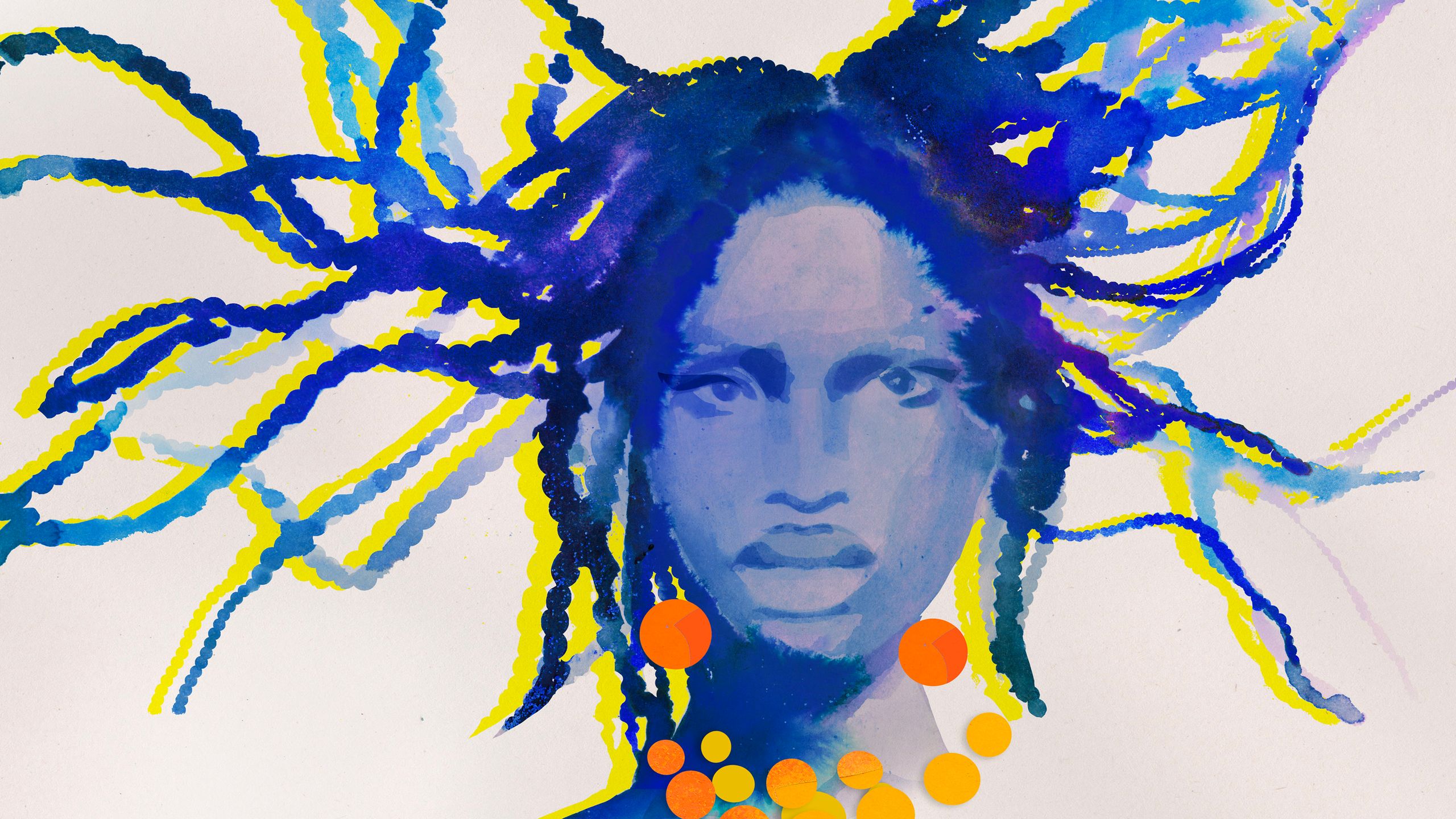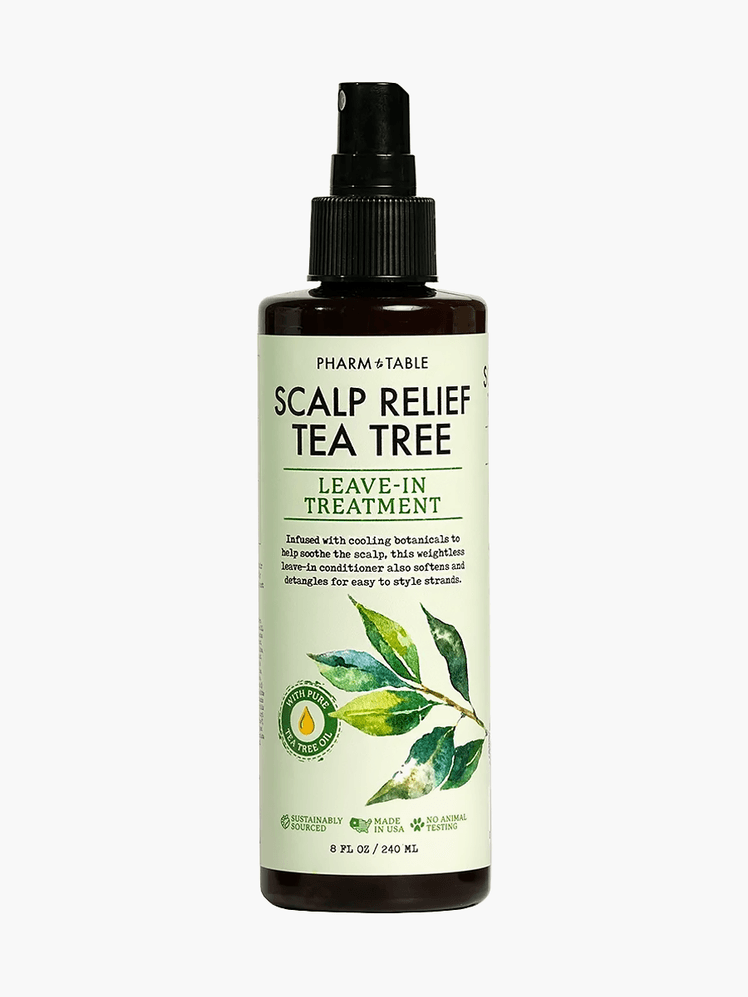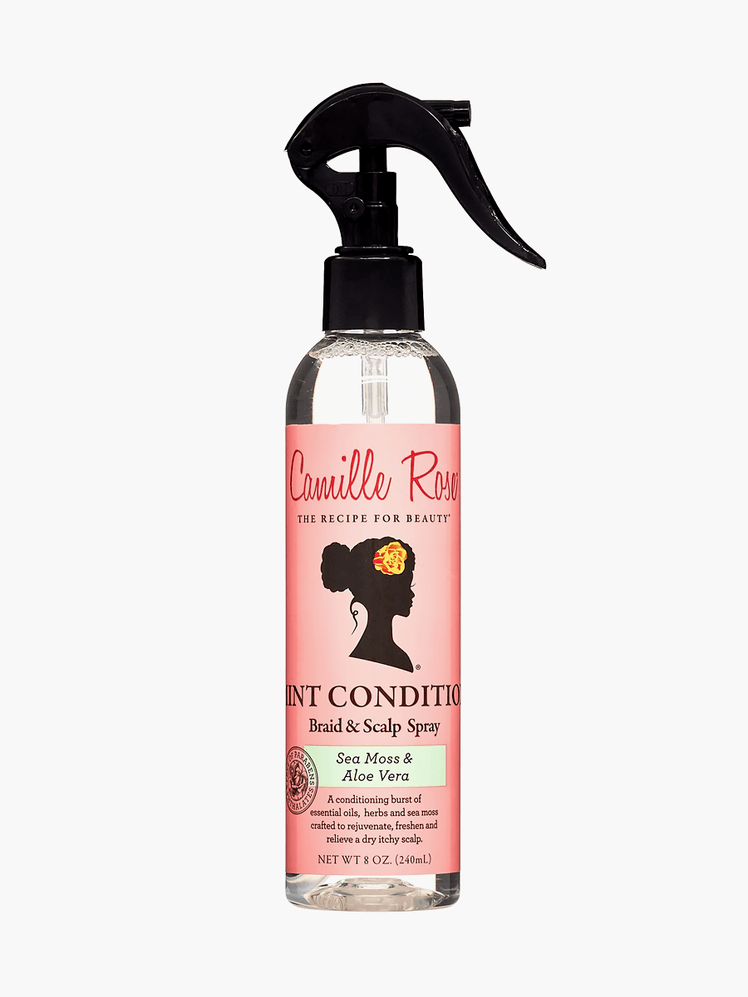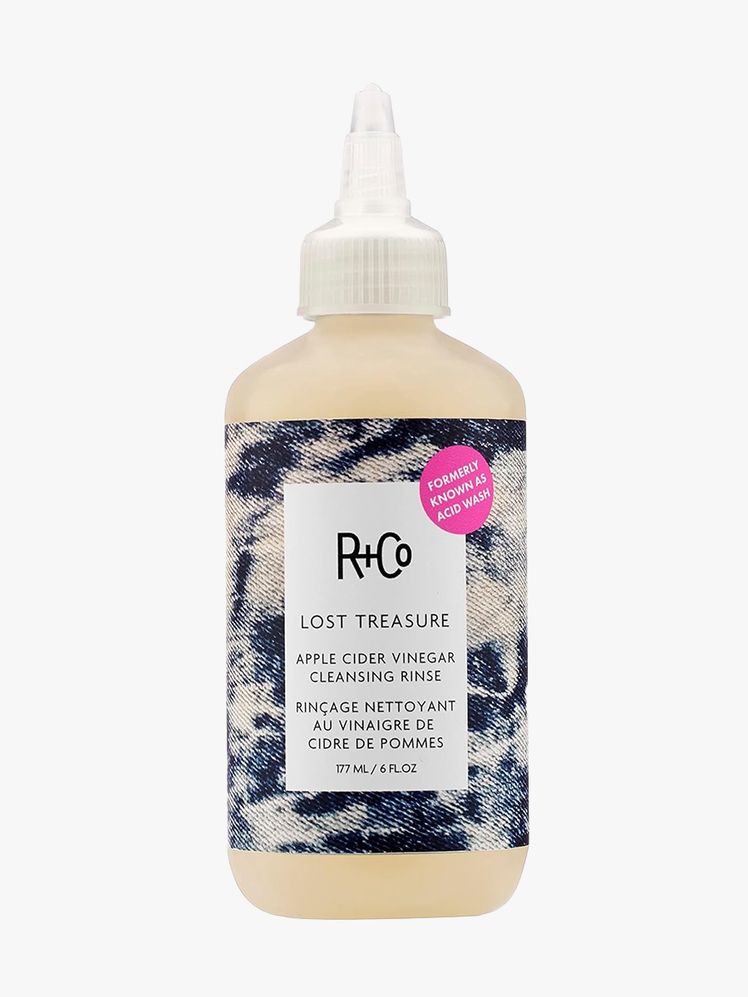All products featured on Allure are independently selected by our editors. However, we may receive compensation from retailers and/or from purchases of products through these links.
Some things are worth sacrificing for a great hairstyle, but your edges are not one of them. Six-plus hours in a salon chair and a couple hundred dollars are the up-front costs for a trendy protective style that will last weeks and cut down your hair routine. Compromised hair health, however, is a hidden price that many Black women pay for these looks. This is a lesson Allure's associate beauty editor Annie Blay-Tettey learned the hard way: “After years of wearing box braids, twists, and wigs, my edges began thinning,” she says. It’s all great when you’re posting a selfie with your new boho braids, until you notice panic-inducing bald spots around your edges.
Don’t get us wrong, protective styles do come with plenty of pros. For instance, they’re a great way to switch up your look while keeping strands protected from chemical and heat exhaustion. But the tension protective styles put on your hair and scalp can, over time, cause major hair loss known as traction alopecia.
“Traction alopecia is caused by anything that pulls on the hair, ultimately damaging the root, and can lead to scarring and permanent hair loss,” board-certified dermatologist Doris Day, MD, previously told Allure. “It's a process that usually takes years.”
Fortunately, traction alopecia is “reversible when early corrective measures are taken,” says board-certified dermatologist and Curology medical director Whitney Tolpinrud, MD. But that doesn't make it any less frustrating in the moment.
In addition to this kind of gradual hair loss, an itchy scalp can be a more immediate side effect of wearing protective styles. Experts say this unpleasant feeling can be caused by irritation from synthetic extensions, a dehydrated scalp, and product buildup. All of this might have you vowing to swear off protective styles for good, but don't cancel your next braid appointment just yet: There are a few ways to continue wearing your favorite looks without compromising your hair and scalp health.
Meet the experts:
- Whitney Tolpinrud, MD, is a San Diego-based board-certified dermatologist.
- Shanna St. Cyr is a New York City- based braider.
- Erica Legagneur is a New York City-based hairstylist.
- Evie Johnson is a certified trichologist and Mizani artist and educator.
- Patricia Oyetakin, MD, is an Atlanta-based board-certified dermatologist.
- Felicia Leatherwood is a Los Angeles-based hairstylist.
- Pekela Riley is a hairstylist and owner of Salon PK in Jacksonville, Florida.
- Naana Boakye, MD, is a New Jersey-based board-certified dermatologist.
- Diane Bailey is a New York City-based hairstylist.
- Crystal Aguh, MD, is a board-certified dermatologist in Baltimore.
Avoid a tight grip
Let’s start at the root. It's a common belief that the tighter the braids, the longer the style will last. While there may be some truth to that, all of that tension is not good for your scalp. “First-line treatment of traction alopecia is avoidance of traction-causing hairstyles,” says Dr. Tolpinrud. The tension from tight styles can also cause red, inflamed bumps—not to mention, it’s painful. If your stylist is plaiting your hair too tightly, be vocal and ask them to ease up.
Braided styles like cornrows require a bit more tension to get them to lay flat on the scalp, so opt for these looks sparingly. If you love the look of neat, flat braids, try flat twists; they give you the same vibe, but the two-strand twist is gentler to wear because it doesn’t lay as close to the scalp.
If box braids are your go-to, try knotless box braids, which don’t require such a tight grip on your scalp to fuse the braiding hair with your natural hair. “With the knotless technique, I start the braids off with the client’s natural hair, then you start adding hair as you go,” says New York City-based braider Shanna St. Cyr. “This means there’s no need to grip tightly on the hair to secure the extensions at the base, like with traditional box braids.”
Skip extra-long braids, twists, and faux locs
We love the look of long buss down braids as much as the next person, but they can be heavy, which causes more tugging on your scalp, especially as they grow out. If you’re inclined to wear Rapunzel-length looks, try not to get them too often, and definitely don’t wear them past three weeks. A great litmus test is to tilt your head to the side and see if you feel any tugging—if you do, it may be time to take those braids out.
Use plant-based or human hair extensions
Hair extensions used for protective styles are often made of synthetic fibers that can irritate the scalp, causing it to become itchy and inflamed. To avoid an allergic reaction to faux extensions, have your stylist use 100% human hair or plant-based hair extensions, which tend to be better for sensitive skin. Brands like Rebundle offer a wide variety of hair-braiding extensions made from plant-based fibers that don’t contain the synthetic coatings of traditional Kanekalon.
If you have synthetic braiding hair on hand that you want to make use of, try giving it an apple cider vinegar bath. “Immerse the Kanekalon hair in a large basin and add three parts hot water to one part apple cider vinegar, then let it soak for 15 to 20 minutes,” says New York City-based hairstylist Erica Legagneur. “Rinse thoroughly, then let the hair air dry. This will remove the synthetic coating from the hair as well as soften the hair.”
Avoid updos that cause tension
Says certified trichologist and Mizani artist and educator Evie Johnson, “There is already a certain amount of tension associated with protective styles like box braids and faux locs, and constantly pulling them up or tightening them can cause a lot of scalp damage.” The higher the hair is gathered on your head, the tighter it pulls at the base of the braids, causing tension on the scalp.
If you’re a fan of ponytails and buns, opt for low-hanging iterations. Also, “make sure to let your updo down at the end of the day to help relieve the scalp,” says Johnson.
Or you can just leave your hair down. If you want to add some variety to this kind of look, try using different parts.
Hydrate and moisturize your scalp
It’s easy to neglect scalp care when you have a protective style, but this can lead to dryness and itching. “Remember, your scalp is also part of your skin and wants to be moisturized at all times,” says Atlanta-based board-certified dermatologist Patricia Oyetakin, MD. “Braids may exacerbate scalp dryness, so spray moisturizers and leave-ins can help access the scalp better.”
Dr. Oyetakin recommends looking for products that contain glycerin (a well-known humectant that pulls in moisture and retains it) and jojoba oil (a nutrient powerhouse made with fatty acids that mimics natural oils, provides moisture, and has antimicrobial properties). If you're dealing with an itchy scalp, Dr. Oyetakin says, tea tree oil, peppermint oil, and aloe are other ingredients that can aid in soothing irritation. She recommends the Pharm to Table Scalp Relief Tea Tree Leave-In Conditioner and Camille Rose Mint Condition Spray.
Dermatologists also recommend spritzing your scalp every four to seven days when your hair is in a protective style. "You will also need to factor in sweating, climate, and scalp concerns," says Dr. Oyetakin. "Spraying too often may lead to scalp buildup and flaking, while not spraying enough can lead to dryness and breakage. Pay attention to how your scalp feels and adjust accordingly."
Consider washing your protective style
The gel used to install protective styles and the products you use to moisturize the hair and scalp can, over time, lead to buildup, so it’s important to cleanse the scalp. It’s also okay to ask your braider to ease up on the amount of gel they use when braiding your hair or opt for no gel at all, if possible.
Dr. Tolpinrud suggests using a shampoo with ketoconazole, selenium sulfide, or zinc pyrithione, which are great for clarifying the scalp. Mizani Scalp Care Anti-Dandruff Shampoo contains pyrithione zinc, plus peppermint oil and cucumber oil, which can be soothing. An apple cider vinegar cleanser like R+Co Lost Treasure Apple Cider Cleansing Rinse can also help clarify the scalp when you're wearing a protective style.
Los Angeles-based hairstylist Felicia Leatherwood suggests applying your cleanser directly to the scalp and gently massaging it in before adding water, to ensure the scalp is clean and exfoliated, while keeping your extensions neat and fuzz-free. After you're done, rinse thoroughly, then make sure to dry as soon as possible (preferably with a blow dryer) so the hair doesn’t sit wet for too long.
Some protective-style wearers are understandably afraid that washing their hair will loosen the look, causing it to frizz up. If this is a concern for you, try spot cleaning instead—it’s a great way to cleanse and relieve an itchy scalp without fully immersing your hair in water and compromising the style.
Hairstylist and owner of Salon PK Pekela Riley suggests dipping a Q-tip or cotton ball into an apple cider vinegar rinse, then lightly dabbing it on affected areas to dissolve buildup and soothe the itchies. “Squeeze the Q-tip between the braids in between the scalp to attract the oil molecules contributing to the buildup. Your hair will also feel really soft because of the low pH of the ACV. Follow up with water to remove,” says Riley. “This can hold you over until you can do a full shampoo.”
Board-certified dermatologist Naana Boakye, MD, says you should be "cleansing the scalp at least once a week to remove product buildup and to allow the scalp to breathe." Spot cleansing can count here, but to a point; you'll need to give your hair a full wash after four weeks, max.
Don't go past the expiration date
Eight weeks should be the longest you go before removing your protective style. Says New York City-based hairstylist Diane Bailey, “After about two months the hair will have new growth and may cause tangling and twisting.”
Experts also warn against getting protective styles back-to-back. Even when done gently, “repeated tension on the hair root [from protective styles] can lead to mechanical damage, hair loss, and shortening of hairs,” says Dr. Tolpinrud. There’s no scientifically proven ideal waiting time, but the stylists we asked recommend going three weeks to a month between protective styles.
Give protective styles a long-term rest
If you have started to notice signs of hair loss, it may not be enough to follow the tips above. Crystal Aguh, MD, a board-certified dermatologist in Baltimore, notes that these tips are precautionary. If you've already started experiencing signs of traction alopecia, though, implementing them can't guarantee that you won’t continue to lose your hair.
“Hairstyles don't have to be tight for you to develop traction alopecia,” says Dr. Aguh. The molecular science of hair follicles doesn’t abide by our human understanding of what feels like it might be “too tight.” If you’ve begun to experience hair loss due to tension, Dr. Aguh explains, then any hairstyle (including glue-on wigs, sew-ins, and locs) that perpetuates tension over a prolonged period could lead to further hair loss.
The first sign of traction alopecia is usually thinning edges. If you notice this, Dr. Aguh says, book an appointment with a dermatologist as soon as you can to determine the severity of your hair loss. In the meantime, avoid wearing protective styles.
For those who struggle to give up the convenience of protective styles completely, Dr. Aguh says, you can do crochet braids while getting treatment for alopecia. (The most common treatment is minoxidil, according to Dr. Aguh.) Crochet braids put less tension on the hairline in the short term, she continues, but “there's still tension there because you cornrow your hair and then you have to crochet an attachment on. That's still less tension than box braids, so I try to give my patients alternatives, but I still emphasize the risk."
Read more from The Melanin Edit's series on hair loss:
Now, watch this:





